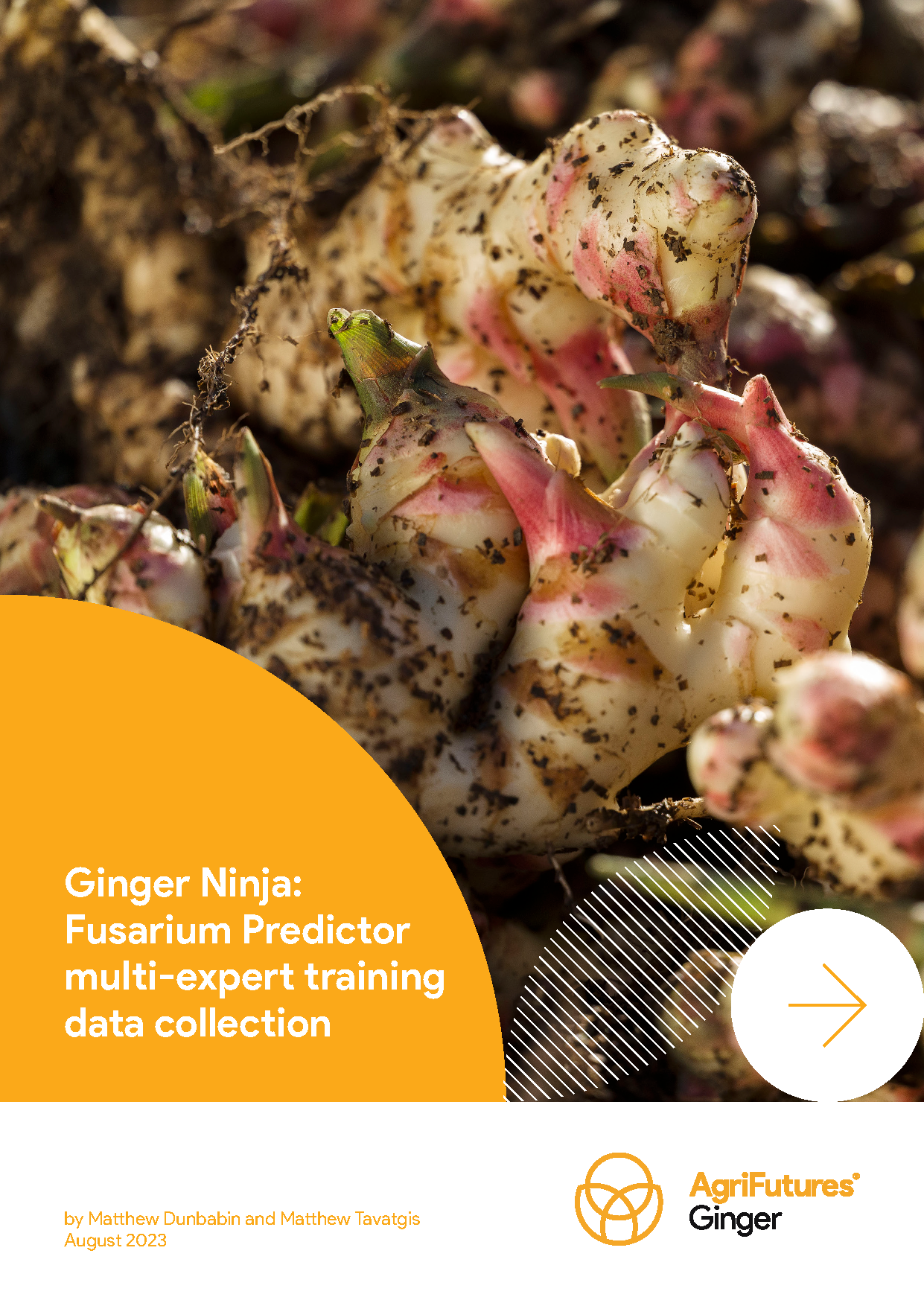Ginger is grown primarily in the sub-tropical, nutrient-rich soils of Queensland, where the largest risk to production for most growers is persistent soilborne fungal pathogens.
Fusarium oxysporum spp. (Fusarium wilt/yellows) is a pathogen for which the primary control method is ensuring clean and healthy ginger seed is planted. This is labour intensive, relying on a mixture of permanent staff and seasonal labour to ensure the hand-cut ‘seed’ pieces are free of Fusarium. Being able to consistently identify Fusarium is difficult due to human error and the use of seasonal labour.
Within this context, this project built upon previous work to pilot the development of an automated system – known as the Fusarium Predictor – that identifies in real time the presence/absence of Fusarium in cut ginger, and ‘sorts’ diseased ginger from non-diseased ginger. Specifically, the project expanded an existing dataset to achieve a high level of performance with eight data models; high performance was defined as precision, recall and F-scores over 0.9 at a confidence threshold of 0.25, which greatly minimises the incidence of false negative.
The study showed that the Fusarium Predictor prototype, trained using human-annotated data, can operate in real time and can function in a seed ginger production facility. The benefit of the AI-based approach used is that the prototype can be extended and re-trained as new data becomes available. This generally improves its robustness and predictive performance; however, poor data labelling can occur during the capture process.
A recommendation from the work is to further expand the base dataset to improve the accuracy and confidence of the model given technology-based solutions will continue to improve and will present additional opportunities to complement on-farm decision making. The models should also be stress tested in different locations to ensure a diverse dataset.





